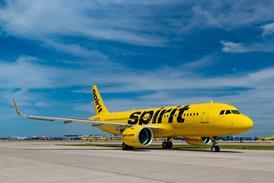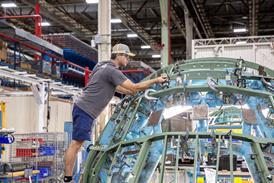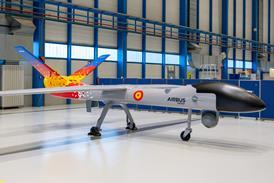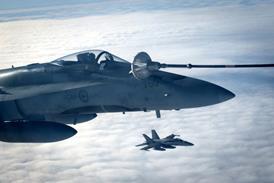The latest research from Airline Business shows that carriers have been tackling their cost bases vigorously over the past few brutal years with measurable success. However, as traffic and revenues rise, the challenge will be to sustain this progress and change the industry’s fundamentals for ever As the bean-counters begin to get a clear picture of the final revenue and traffic numbers for last year, many carriers are preparing to rewrite the record books. The industry has reached the peak of the cycle in traffic growth terms – a likely 7% rise in 2005 – and global industry revenues will soar past the $400 billion mark for the first time, albeit partly assisted by fuel surcharges in addition to strong traffic levels.
As the bean-counters begin to get a clear picture of the final revenue and traffic numbers for last year, many carriers are preparing to rewrite the record books. The industry has reached the peak of the cycle in traffic growth terms – a likely 7% rise in 2005 – and global industry revenues will soar past the $400 billion mark for the first time, albeit partly assisted by fuel surcharges in addition to strong traffic levels.
At this headline level the industry looks like it might never have had it so good. And 2005 could be the year when the industry, stripping out the dampening currency effects of the weak US dollar over the past few years, saw real revenue growth return.
If the forecasters are right, coupled with an expected slight easing of oil prices, this year will not reach the heights of 2005 in traffic terms, but it will still see steady growth in the 4.5-6.5% range in 2006. Revenues too are on an upward trajectory. Profitability and yields are another matter of course. Living with lower yields is a fact of life for almost every carrier. They are expected to continue to track further downwards as well.
This means that the industry’s obsession with achieving structurally lower costs will rightly persist. Much has been achieved in lowering costs since the 2001 crisis. Areas once judged impossible to tackle, like labour, distribution or airport fees, are now firmly in play.

Assessing how far the industry has come in cost terms, and how far it still has to go, is complicated by high fuel prices. An Airline Business analysis of the change in airline unit costs between 2001 and 2004 – a period of some of the most intense cost-cutting ever seen – offers an insight into how much has been achieved. Measured in dollars and including fuel, unit costs for the 28 airlines in the sample fell by 8.5% over this four-year period. This is a respectable reduction given a 64% increase in fuel prices over the same time. Fuel costs have risen from nearly 15% of total operating expenses to about 20% over this period. The 16 North American carriers in the basket saw their unit costs dip by 7%, while the 12 others from around the globe achieved an even better 11.6%.
A deeper dig into the figures by grouping airlines by geography or type highlights another trend. North America’s mainline carriers only saw a 5.1% reduction, due to a fall in operating expenses and a decrease in capacity. This illustrates how much more work US majors still have to do on the cost side. It also contrasts with low-cost carriers and those in the rest of the world group where unit costs decreased because capacity grew faster than expenses.
Only five airlines in the sample saw their unit costs rise – China Southern, Continental, Delta, Northwest and Southwest Airlines. All except Northwest did so because expenses rose faster than capacity. In Northwest’s case, capacity fell by over 7% but expenses fell only by less than 1%, meaning the airline spent roughly the same amount to finance a lower level of production.
Some of the outstanding performers were Air New Zealand, America West and Iberia – the only three carriers in the sample that boosted capacity and trimmed expenses at the same time – demonstrating how productivity improvements and careful cost reduction strategies can work. American’s performance is also noteworthy, as it kept its capacity roughly stable while reducing operating expenses by 14%. The industry’s best-performing carrier in terms of unit costs does not necessarily have to be a pure low-cost player. As the research found, Singapore Airlines reports unit costs that are in the same ball park, or even better, as those of JetBlue, Virgin Blue and Ryanair.
However, all admit there is more to do, even after four brutal years. The key test will be if carriers can sustain the momentum of structural cost reform as growth returns. ■
Source: Airline Business























